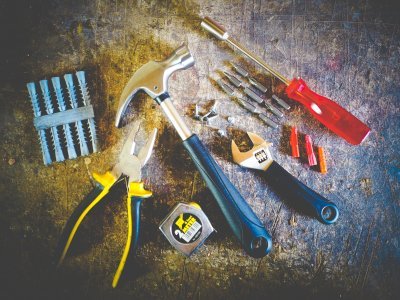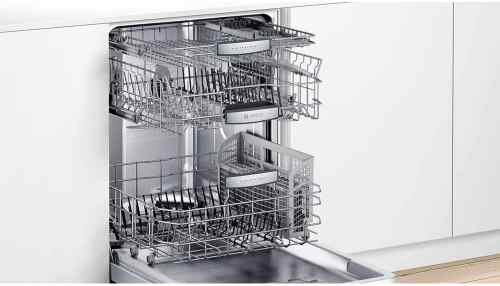Installing a dishwasher can seem like an intimidating task, but it can often be surprisingly easy. Whether you are trying to upgrade your current model or install one for the first time, this article will help guide you through the process and answer any questions you may have. From understanding how to pick the right dishwasher and gathering the necessary tools to connect the water supply and electrical wires, we will provide tips on how to make your installation as successful as possible.
Table of Contents
Benefits of Owning a Dishwasher
Owning a dishwasher is an excellent way to make cleaning up after meals easier and faster. Not only can this save time, but it also can help conserve water and energy. Installing a dishwasher isn’t as difficult as it may seem, but the process will vary depending on what kind of machine you have.
Many newer models are designed with ease of installation in mind, so they come with instructions and all the necessary items needed for setup. It’s important that you follow instructions carefully when installing your machine so that there are no complications later down the road. If you don’t feel comfortable setting it up yourself, many home improvement stores offer professional installation services at an additional cost.
Overall, owning a dishwasher comes with numerous benefits from saving time to conserving water and energy.
Choosing the Right Dishwasher
When it comes to convenience and efficiency, a dishwasher can be an invaluable kitchen appliance. Choosing the right one for your home is an important decision. Are dishwashers easy to install? In most cases, yes. Today’s modern models come with detailed instructions that make installation relatively straightforward.
The process will vary depending on the type of dishwasher you buy, but in many cases, you’ll only need a few basic tools such as a screwdriver and adjustable wrench for installation. If you’re familiar with some basic DIY skills then this should be quite easy to do yourself. However, if you feel uncomfortable doing it yourself or don’t have the necessary tools then it’s best to call in a professional plumber to take care of the job for you.

Are Dishwashers Easy to Install?
Installing a dishwasher can be a straightforward task, but there are important considerations to keep in mind. Depending on the type of dishwasher you choose, and the existing plumbing of your kitchen, the installation might take some time or require professional help.
Before starting the project, it is essential to make sure that all necessary components are included and functioning correctly. For those who choose to install their own dishwasher, it is important to check for any local codes that may require special permits or inspections. Additionally, familiarizing yourself with the instructions before beginning will save time and reduce frustration later on.
If you have access to hot water in the sink closest to where your dishwasher will be installed, half of the work is done! All that’s left is connecting your drain line and running an electrical line from an existing circuit in order to power up your appliance.
Step 1: Gathering Necessary Tools

Installing a dishwasher in your home can seem like an intimidating task, but with the right tools and guidance, it’s easy to do yourself. Before you start on the project, be sure that you have gathered all of the necessary tools for the job.
The most important tool is a sturdy set of pliers. Pliers are essential for gripping and manipulating wires during installation. You’ll also need a screwdriver or drill to tighten down nuts and bolts around the dishwasher’s mounting bracket. Additionally, it’s handy to have an adjustable wrench on hand to help secure the water line connection if needed. If plumbing work is required, you may want to consider investing in additional items such as pipe wrenches or PVC glue depending on your setup.
With these basic tools at hand, installing your new dishwasher should be relatively straightforward!
Step 2: Prepping the Area
Once you have gathered all of the necessary supplies and materials for installation, start by cleaning off the area where you plan on placing your new dishwasher. Remove any dust or debris from around the area with a damp cloth or vacuum cleaner.
Step 3: Making Connections
This involves connecting the dishwasher to your home’s water supply and electrical outlets.
Before beginning, make sure you have all of the necessary materials such as the right type of tubing for the water connection and a power cord adapter for electricity. To connect the water supply line, turn off the main valve and then attach one end of a flexible hose to an elbow-fitting adapter on either side of the wall shutoff valve. Then attach the other end to your new dishwasher’s inlet valve which is typically located at its base or side panel.
Step 4: Securing and Adjusting
This involves using mounting brackets to secure it in place, as well as adjusting the door so that it seals properly when closed.
First, you’ll need to locate and attach any mounting brackets that came with your dishwasher. These are usually located near the top of each side wall inside your machine. Once they are securely fastened to the unit body, use screws or bolts to attach them to adjacent cabinets or walls for added stability. Next, adjust both sides of your door until there is a tight seal around the edges when it’s closed. This will help prevent leaks during operation and ensure optimal performance from your new appliance!
Step 5: Testing
This step should not be overlooked as it ensures that all components are functioning correctly before using the dishwasher.
Testing a dishwasher consists of turning on the water supply, connecting hoses and electrical lines, and starting up the appliance to make sure it runs properly. It also involves checking for any leaks or other issues that may have arisen during installation. Depending on your model, you may need to adjust settings such as temperature or cycle times in order to get optimal performance from your new dishwasher.
Testing your dishwasher is important to ensure its safe operation and proper performance.
Are Dishwashers Easy to Install?
Yes, dishwashers are relatively easy to install. Depending on the type of dishwasher you purchase, installation can be as simple as plugging it in and running the water line to the sink. Most dishwashers come with instructions, so if you’re comfortable following directions and have basic tools like a screwdriver and wrench, you should be able to install your dishwasher in no time.
However, if you don’t feel confident in your ability to install your dishwasher correctly or safely, it’s always best to hire a professional. A professional plumber will have the knowledge and experience to ensure that your dishwasher is properly installed and functioning correctly. They can also help troubleshoot any problems that may arise during the installation or use of the dishwasher.
Conclusion
Careful planning and an understanding of the installation process can make setting up a dishwasher easy and hassle-free. Taking the time to read instructions, plan ahead, and gather needed materials can go a long way in making sure everything goes smoothly. In addition, having a friend or family member help with the installation can make the job even easier. Installing a dishwasher may seem daunting at first, but with some preparation, it is possible to get the job done quickly and safely.

